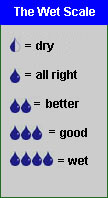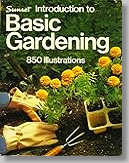I know only because I love."
-Leo Tolstoy, War and Peace
| FAVORITE HAUNTS |
Book Search
Meet the Eldridges. He's looking to transition out of a state department job into the private sector. She's the photogenic up-and-coming host of a popular gardening show. Together they have two children, Janie, the youngest, and Martha the first-born. Janie fancies herself an amateur sleuth. Martha is a college student looking to leave her mark on the world. The Eldridges are in effect a flesh and bones version of that crime-fighting cartoon family of Disney fame, The Incredibles.
True Grit
Written on the heels of her highly successful debut Mulch (Crimeline, $7.50), the Eldridges are returning characters, with largely the same roles as before. In Mulch, things go awry for Bill and Louise when human body parts turn up in their compost. In order to clear their names, they depart on a clandestine search for the killer which the city's keystone-styled cops appear incapable of initiating themselves. Pest largely follows the same premise.
False Leads
With a cast of thousands (okay, a hundred or less), Pest has no shortage of suspects. From the disgruntled station manager to jealous co-hosts to a largely faceless army of fundraising volunteers, motive and access are key. The biggest question for Bill and Louise is who to begin their search with.
Interspersed with essays on gardening (creating compost, garden layout, etc.), the author's penchant for gardening is apparent. Add to that the setting and twists of Pest (fittingly incorporating a certain flower into its solution), clearly gardens are an obsession with Ripley. What's also clear is if you like gardening, and enjoy a good mystery compounded by characters with incredible pluck - pluck balanced against a family's vulnerability - you'll love Pest. Book two of the Louise Eldridge Mystery series.
In my experience, few books live up to their titles. Once in a while, however, a volume comes along that bucks the trend. Ortho's All About Bulbs, by Alvin Horton and James McNair, is one such book.
All the expected basics of bulb biology are covered, including the various root structures that constitute the broad definition of "bulb". These include tubers, true bulbs, corms, tuberous roots and rhizomes, with clear procedures on dividing and planting each type. They also cover forcing blooms, wintering over (not all bulbs need to be dug up in the fall), and handling bulbs according to climatic zone. Fortunately, according to Bulbs, I live in a temperate zone that requires little to no special care.
The authors have also included tips on achieving ultimate appeal. Generally, this is a combination of the type of bed (raised beds are great along drives and walkways) and color selection. There are also tips on soil (unfortunately, the authors push chemical amendments - Ortho is a chemical company after all - advice that might be better ignored), and suggestions for companion plants to mix with your bulbs. Or, the authors advise going with a bed of solid bulbs if you've got the quantity to pull it off. And if you haven't, wait a year. Bulbs generally are fantastic multipliers. Also includes a stunning bulb directory in full-color, and index.
Sunset's Introduction to Basic Gardening does for yard care what Ortho's All About Bulbs (Ortho Books, $6.95) does for corms, tubers, rhizomes and the like. While expanding our knowledge of gardening, our vocabulary and imagination are also enhanced.
To me, basic gardening covers digging, spreading soil, burying seeds (or roots), and watering. To Zimmerman, it's that, and a whole lot more. Just about anything one can think of regarding the yard is included in Basic Gardening. It covers topics from location selection to soil amendment; proper planting depth to how to tell when it's time to harvest, and all topics in between.
In America - at least my neck of the woods - everybody has a lawn. Some cities and HMOs even have codes requiring them. Hip to the game, Zimmerman devotes a good chunk of time on lawns, from seed selection to installation to care, and like other advice in Basic Gardening, provides a bottom-up approach: match the plant to the soil. Although she does cover soil amendment - without leaning heavily on chemicals - she suggests planting according to your natural soil conditions, rather than trying to change what's already in the dirt. If your soil has a lot of clay in it, plant something that likes dense soil. In a sandy soil, plant something that doesn't like its roots kept wet. The grittier the soil, the faster and more efficiently water will drain through it.
Basic Gardening also covers tricks for preventing soil erosion; greenhouse construction; irrigation system installation; choosing and caring for your tools; pruning; companion planting for pest control; raised garden construction; attracting beneficial insects and wildlife; transplanting; grafting (yes, grafting!); coldframes, hotbeds, and plant screens (for sun-sensitive species); house plants; aquatic plants; succulents and just about every other gardening subject under the sun. Basic my ass; Introduction to Basic Gardening is a cornucopia of gardening know-how. Includes full-color plant directory, glossary of terms, and index.
posted 03/07/24
|





